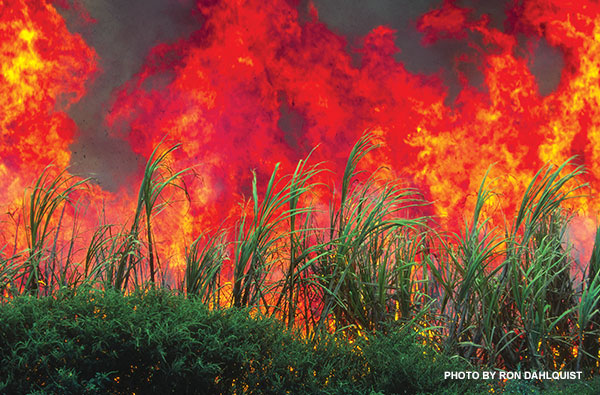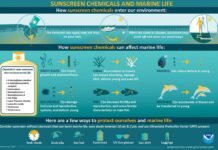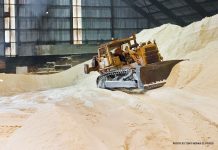
For a decades-old issue that divides the community like few others, the discourse continues to be fairly civil. Perhaps this politeness is a product of life in an island community, or perhaps it is just as hard to come down on local agriculture and the 800 jobs the plantation provides, as it is to dismiss an aunty’s breathing problems.
Even the most ardent supporters of cane admit there are problems related to dust, smoke and ash. So why burn? Rick Volner, HC&S plantation general manager, says the future of Hawai‘i’s last sugar plantation hangs on this question. He says that while HC&S continues to experiment with alternative types of cane that can be green harvested, as well as other biofuel crops, burning cane is the business model that works.
“We’ve been here for over 140 years and we continuously look at ways to improve the operation so we can be here another 140 years,” Volner says, then adds, “We still need to burn.”
Cane concentrates its sugar in the stalk, not in the leafy material that accounts for 20 to 25 percent of the plant’s volume. Burning, which eliminates the leaves without harming the stalk, also eliminates the need to haul all that unusable material back to the mill — where, says Volner, it would have to be processed.
The mill’s high-pressure rollers already turn nonstop throughout harvest season. Volner says that adding another 20 to 25 percent of volume to be washed, chopped, shredded and squeezed between the rollers for little or no return is an unsustainable burden. And it’s not just economics. Burning helps control pests and limits crop-disease dispersal, which is why burning is also a common practice among rice farmers in California’s Sacramento River Valley.
Volner also rejects claims that the plantation burns white plastic PVC pipe in its fires. “At one time this was the largest drip-irrigated farm in the United States. We have hundreds of miles of PVC pipe that is buried through the fields. If that was burned it would [release] harmful compounds. We take a lot of care to see that it doesn’t burn.”
The black polyethylene now used throughout the fields for drip irrigation does get burned, but Volner says — and Internet data confirm — that it has “no harmful compounds. If it is burned, it basically breaks down into carbon dioxide and water.”





